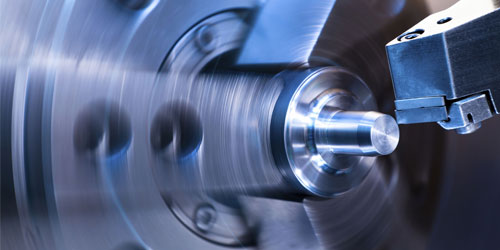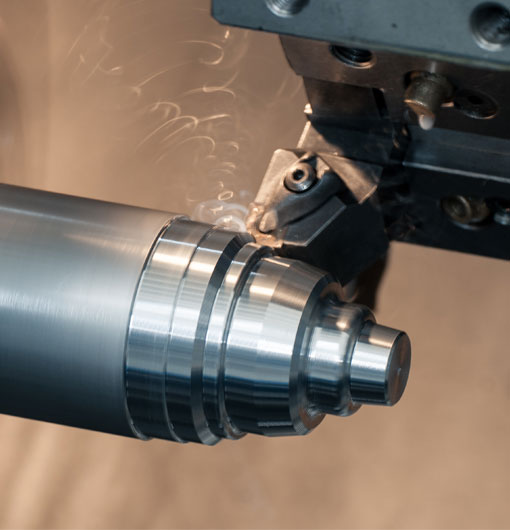In the world of CNC machining, taper turning is a vital skill that can greatly improve the quality and functionality of the finished product. But it can be challenging, especially for beginners. With the right knowledge, practice, and understanding of CNC taper turning code, you can achieve accurate and efficient machining of tapered parts. In this comprehensive guide, we will discuss the essential tips and tricks to help you master CNC taper turning.
What is CNC Taper Turning?
Taper turning is the process of machining a part with a gradually changing radius, creating a conical or tapered shape. It's a common operation in manufacturing industries, allowing for the creation of parts that have a natural fit, tight tolerances, and evenly distributed stress.
Why Taper Turning Matters
Tapered parts are critical to the function and longevity of numerous mechanical systems, from automotive applications to aerospace components. They allow for improved load distribution, precise alignment, and easy assembly and disassembly of various components. Mastery of taper turning is essential for anyone involved in these industries, as well-designed and machined tapered parts can greatly enhance the performance and lifespan of the overall system.
Taper Turning Methods in CNC Machining
There are several methods to approach taper turning, such as:
1. Compound Rest Method
2. Taper Attachment Method
3. Tailstock Setover Method
4. Form Tool Method
5. CNC Programming Method
Each of these methods has its advantages and disadvantages, depending on factors like machining requirements, tooling availability, and operator experience. Ultimately, CNC programming is often the preferred method for achieving accurate and efficient taper turning, as it is highly customizable, precise, and repeatable.
CNC Taper Turning Code Fundamentals
To master CNC taper turning code, it's essential to understand the two primary coordinate systems used in CNC programming: G-code and M-code. G-code is the primary language for controlling CNC machine actions, while M-code is used for machine-specific auxiliary functions.
There are specific G-code commands and parameters that you'll need to become familiar with for accurate taper turning:
1. G71/G72: These codes are used to define the cutting cycle and type of taper (external/internal) to be machined.
2. G00/G01: Rapid and linear motion commands help control the tool's position for each cut.
3. G90/G91: Absolute and incremental programming modes determine whether coordinates are relative to the part's origin or the tool's current position.
It's also crucial to understand code parameters like:
X: The horizontal coordinate of the part.
Z: The vertical coordinate of the part.
K, D, and F: These parameters control the depth of cut, taper angle, and feed rate, respectively.
Tips and Tricks for Mastering CNC Taper Turning
1. Understand radial and axial tapers: Radial tapers are cut using only the X-axis, while axial tapers are cut using the Z-axis. Knowing which type of taper you need for your part is critical to producing an accurate result.
2. Choose the right tools: Select cutting tools that are compatible with your workpiece material, tolerance requirements, and desired surface finish.
3. Optimize your program: Utilize canned cycles, subprograms, and macros to simplify your code and speed up the machining process.
4. Control tool wear: Monitor and adjust your cutting parameters to minimize tool wear and maintain part quality.
5. Perform dry runs: Always simulate your program in a virtual environment before running it on the actual machine to prevent accidents, errors, and tool damage.
6. Inspect: Regularly inspect finished parts to ensure dimensions and specifications are met〞investigate and correct any discrepancies that arise.
Putting It All Together: An Example of CNC Taper Turning Code
Here's a simple example of CNC taper turning code for an external radial taper:
G90 G71 G40 G21G00 X50 Z2G01 Z-30 F0.2G72 P1 Q2 R0.5G00 X20 Z2G01 Z-30 F0.2G02 X0 Z-32 R5M99
This code demonstrates basic taper turning using several G-code commands and parameters that we've discussed. Of course, your particular program may be more complex, depending on the part specifications and taper requirements.
By understanding and mastering CNC taper turning code, you can significantly improve your CNC machining capabilities and produce high-quality tapered parts with accuracy and efficiency. With diligent practice and the right resources, you'll be on your way to becoming a skilled CNC machinist who can tackle even the most challenging taper turning projects. Keep honing your skills, stay curious, and embrace the continuous learning process that is integral to the world of CNC machining.
cnc taper turning code













